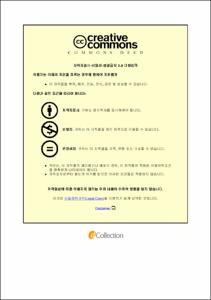스마트홈 거주자의 정보 기술 수용에 관한 연구-확장된 기술수용모델을 중심으로-
- Abstract
- This study attempts to analyze how the smart home residents accept smart home technology through extended technology acceptance model(TAM). The extended model is completed by adding two variables (perceived enjoyment and personal innovativeness) to the original TAM by Davis(1986). Among eight hypotheses tested, seven were accepted and one was rejected. The hypotheses that test the relationship among variables in the research model, they are proved to be statistically significant except one (H7).
The accepted seven hypotheses include the influencing relationships between personal innovativeness and perceived ease of use (H1), personal innovativeness and perceived usefulness (H2), perceived ease of use and perceived usefulness (H3), perceived ease of use and enjoyment (H4), perceived usefulness and enjoyment (H5), perceived ease of use and behavioral intention (H6), and enjoyment and behavioral intention (H8). The rejected hypothesis (H7) is a hypothesis that test the relationship between the variables of perceived usefulness and behavioral intention.
The rejected hypotheses is interesting in that the perceived usefulness does not influence behavioral intention statistically. This relationship is key part of TAM, however the result is different from previous studies. Most of previous studies on this subject insist that the perceived usefulness influence behavioral intention statistically.
I conclude that the basic reason for this difference the settings of this study.
Generally, perceived usefulness is known to directly influence the users’ behavioral intention in original TAM. However, the degree of influence in perceived usefulness depends on the technology itself and the user’s goal (Dohan and Tan, 2013). In this study, H7 is rejected. I believe the reasons of this result as two folds. First, smart home technology is not a singular technology but rather it is a system of 14 different interweaved technologies. Second, instead of perceiving it as a entirely new technology, most residents think it as a new smart phone app. because they use the technologies through smart phones or wall pads.
The main contribution of this study is how smart home technology can be easily accepted by residents. If users perceived the technology easy to use, efficient, and fun, then they will easily accept the technology. Another important contribution is that this study is an exploratory and empirical study of an early stage of spatial revolution.
- Issued Date
- 2022
- Awarded Date
- 2022. 8
- Type
- Dissertation
- Publisher
- 부경대학교
- Affiliation
- 부경대학교 경영대학원
- Department
- 대학원 경영컨설팅협동과정
- Advisor
- 이재정
- Table Of Contents
- 제 1 장 서 론 1
제 1 절 연구의 배경 1
제 2 절 연구의 내용 및 방법 3
제 3 절 논문의 목적 6
제 2 장 이론적 배경 7
제 1 절 기술수용모델 7
1. 기술수용모델의 개념 7
2. 기술수용모델과 행동이론 9
3. 확장된 기술수용모델의 주요 변수 13
4. 확장된 기술수용모델에 관한 연구 16
제 2 절 스마트 홈 18
1. 스마트 홈의 개념 18
2. 스마트 홈의 정보 기술 20
제 3 장 연구방법 27
제 1 절 연구모형 27
제 2 절 연구가설의 설정 29
1. 개인 혁신성과 지각된 사용 용이성과의 관계 29
2. 개인 혁신성과 지각된 유용성과의 관계 30
3. 지각된 사용 용이성과 지각된 유용성의 관계 30
4. 지각된 사용 용이성, 지각된 유용성과 지각된 즐거움과의 관계 32
5. 지각된 사용 용이성 및 지각된 유용성과 사용 의도와의 관계 33
6. 지각된 즐거움과 사용 의도와의 관계 34
제 3 절 변수의 조작적 정의 및 측정 항목 36
1. 개인의 혁신성 36
2. 지각된 사용 용이성 36
3. 지각된 유용성 37
4. 지각된 즐거움 37
5. 사용 의도 38
6. 측정항목 38
제 4 장 실증분석 40
제 1 절 자료의 수집 및 특성 40
제 2 절 측정 도구의 신뢰성 및 타당성 분석 42
제 3 절 가설 검증 47
제 4 절 성별의 조절 효과 검증 49
제 5 절 디바이스 유형의 조절 효과 검증 51
제 5 장 결 론 53
제 1 절 연구결과의 요약 및 시사점 53
제 2 절 연구의 한계점 및 향후 연구방향 55
참 고 문 헌 57
설 문 지 69
- Degree
- Doctor
- Files in This Item:
-
-
Download
 스마트홈 거주자의 정보 기술 수용에 관한 연구-확장된 기술수용모델을 중심으로-.pdf
기타 데이터 / 962.02 kB / Adobe PDF
스마트홈 거주자의 정보 기술 수용에 관한 연구-확장된 기술수용모델을 중심으로-.pdf
기타 데이터 / 962.02 kB / Adobe PDF
-
Items in Repository are protected by copyright, with all rights reserved, unless otherwise indicated.